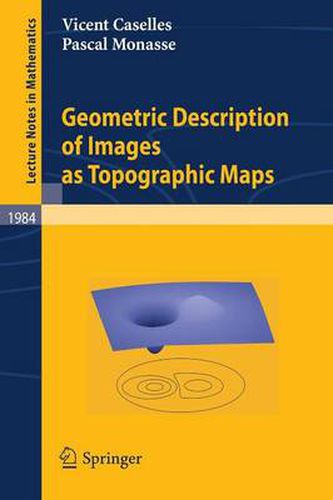Readings Newsletter
Become a Readings Member to make your shopping experience even easier.
Sign in or sign up for free!
You’re not far away from qualifying for FREE standard shipping within Australia
You’ve qualified for FREE standard shipping within Australia
The cart is loading…






This title is printed to order. This book may have been self-published. If so, we cannot guarantee the quality of the content. In the main most books will have gone through the editing process however some may not. We therefore suggest that you be aware of this before ordering this book. If in doubt check either the author or publisher’s details as we are unable to accept any returns unless they are faulty. Please contact us if you have any questions.
This book discusses the basic geometric contents of an image and presents a treedatastructuretohandleite?ciently.Itanalyzesalsosomemorphological operators that simplify this geometric contents and their implementation in termsofthe datastructuresintroduced.It?nallyreviewsseveralapplications to image comparison and registration, to edge and corner computation, and the selection of features associated to a given scale in images. Let us ?rst say that, to avoid a long list, we shall not give references in this summary; they are obviously contained in this monograph. A gray level image is usually modeled as a function de?ned in a bounded N domain D? R (typically N = 2 for usual snapshots, N=3formedical images or movies) with values in R. The sensors of a camera or a CCD array transform the continuum of light energies to a ?nite interval of values by means of a nonlinear function g. The contrast change g depends on the pr- ertiesofthesensors,butalsoontheilluminationconditionsandthere?ection propertiesofthe objects,andthoseconditionsaregenerallyunknown.Images are thus observed modulo an arbitrary and unknown contrast change.
$9.00 standard shipping within Australia
FREE standard shipping within Australia for orders over $100.00
Express & International shipping calculated at checkout
This title is printed to order. This book may have been self-published. If so, we cannot guarantee the quality of the content. In the main most books will have gone through the editing process however some may not. We therefore suggest that you be aware of this before ordering this book. If in doubt check either the author or publisher’s details as we are unable to accept any returns unless they are faulty. Please contact us if you have any questions.
This book discusses the basic geometric contents of an image and presents a treedatastructuretohandleite?ciently.Itanalyzesalsosomemorphological operators that simplify this geometric contents and their implementation in termsofthe datastructuresintroduced.It?nallyreviewsseveralapplications to image comparison and registration, to edge and corner computation, and the selection of features associated to a given scale in images. Let us ?rst say that, to avoid a long list, we shall not give references in this summary; they are obviously contained in this monograph. A gray level image is usually modeled as a function de?ned in a bounded N domain D? R (typically N = 2 for usual snapshots, N=3formedical images or movies) with values in R. The sensors of a camera or a CCD array transform the continuum of light energies to a ?nite interval of values by means of a nonlinear function g. The contrast change g depends on the pr- ertiesofthesensors,butalsoontheilluminationconditionsandthere?ection propertiesofthe objects,andthoseconditionsaregenerallyunknown.Images are thus observed modulo an arbitrary and unknown contrast change.